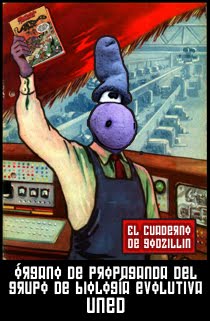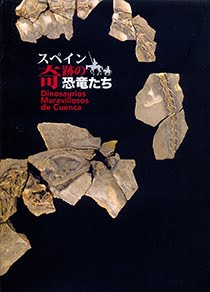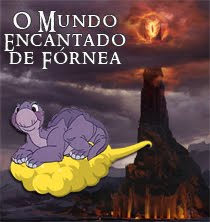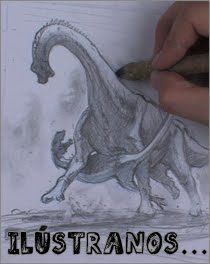A pesar de la abundancia de las tortugas pan-pleurodiras en el Cretácico más superior de Europa, donde fueron las reinas del mambo, su registro es muy limitado en niveles más antiguos de este continente. Proterochersis robusta, procedente del Triásico Superior de Alemania, es interpretada por algunos autores como un miembro de este linaje, mientras otros lo interpretan como un quelonio primitivo, perteneciente a un nodo basal respecto a la divergencia entre Pan-Pleurodira y Pan-Cryptodira. Platychelyidae está representado en el registro europeo mediante Platychelys oberndorferi, reconocida en el Jurásico Superior de Suiza. Al final del Mesozoico, dos linajes de Pan-Pleurodira coexistieron en Europa: Pelomedusoides y Dortokidae. El primero de ellos (representado por Bothremydidae) corresponde a un linaje de origen gondwánico, fue muy abundante y diverso en el Campaniense y Mastrichtiense europeo. Dortokidae es reconocido como un clado endémico de este continente. Su posición sistemática es polémica, habiéndose propuesto varias hipótesis, escasamente sustentadas, debido a la falta de registro.
Los dortókidos son relativamente abundantes en yacimientos campanienses y maastrichtienses de Europa suroccidental, donde fue definida su especie tipo, Dortoka vasconica. Este grupo ha sido también reconocido en el Maastrichtiense de Rumania, representado por “Muehlbachia nopcsai”; así como en el Paleoceno de ese continente, donde se definió Ronella botanica. La presencia de representantes indeterminados de este grupo ha sido indicada en el Santoniense de Hungría y el Campaniense de Austria. En contraste con este relativamente abundante registro del Cretácico Superior, Dortokidae ha sido reconocido en el Cretácico Inferior mediante una única cita preliminar, correspondiente a material escaso y fragmentario, del Barremiense de Vallipón (Teruel).
El trabajo presentado en este congreso se centra en la descripción y análisis de nuevo material de tortugas procedente del Cretácico Inferior (Aptiense inferior) de la conocida Formación Arcillas de Morella, y, más concretamente, hallados en el término municipal de Morella (Castellón). Además de otros muchos grupos de vertebrados, allí se ha notificado la presencia de varios taxones de tortugas: una tortuga primitiva (Solemydidae), cercanamente emparentada con el taxón británico Helochelydra nopcsai; el xinjiangquélido Brodiechelys royoi, definido en esa localidad; y, al menos, otros dos miembros indeterminados de Cryptodira. Los nuevos especímenes analizados corresponden a un quinto taxón. Este material es asignable a Dortokidae. El taxón de Morella presenta varios estados de carácter distintos a los de los taxones hasta ahora definidos, lo que podría indicar que se trata de una nueva forma. Por lo tanto, este hallazgo permite confirmar la presencia de Pan-Pleurodira en el Cretácico Inferior de Europa, aportando nuevos datos sobre la evolución de Dortokidae.
El resumen correspondiente a este trabajo es el siguiente:
Pan-pleurodiran turtles are poorly represented at the European pre-Santonian record. Proterochersis robusta, from the Late Triassic of Germany, is considered by several authors to be a representative of that lineage, while others identify it as a member of Testudinata outside the crown-group Testudines. Platychelyidae is represented in the European record by the shell taxon Platychelys oberndorferi from the Late Jurassic of Germany and Switzerland. At the end of the Mesozoic, two pan-pleurodiran groups coexisted in Europe: Pelomedusoides and Dortokidae. Pelomedusoides was a lineage of Gondwanic origin very abundant and diverse during the Campanian and Maastrichtian of Europe. Dortokidae was an endemic European group. The systematic position of Dortokidae is currently in discussion, having being identified as the sister taxon of Eupleurodira (Chelidae + Pelomedusoides) or as the sister taxon of Pelomedusoides.
Dortokidae are relatively abundant in Campano-Maastrichtian sites of southwestern Europe, where the type species, Dortoka vasconica, was described. Dortokidae are also represented in the Maastrichtian of Romania, where “Muehlbachia nopcsai” was defined; and in the late Paleocene of that country, represented by Ronella botanica. The presence of this group has been reported in the Santonian of Hungary and the Campanian of Austria. Despite that Late Cretaceous record, Dortokidae were preliminarily quoted, based on scarce and fragmentary plates, at the Barremian of Spain (Vallipón, Teruel, Castellote Sub-basin, Maestrazgo Basin, Iberian Range).
New material of turtles from the Early Aptian of Spain (Arcillas de Morella Formation), from Morella (Castellón, Morella Sub-basin, Maestrazgo Basin), is presented. That formation is well-known due to the high diversity of vertebrates, corresponding to terrestrial, freshwater and marine taxa. Several turtle taxa have been hitherto identified there, corresponding to a member of Solemydidae (stem Testudines) closely related to the British Helochelydra nopcsai, the xinjiangchelyid Brodiechelys royoi (stem Cryptodira) and, at least, an indeterminate member of the crown Cryptodira. The new specimens share much of the combination of synapomorphies of Dortokidae, allowing their assignment to that clade, and also present a unique combination of characters that will be further analyzed. Therefore, this finding allows confirming the presence of Pan-Pleurodira in the Early Cretaceous, and shed light on the early evolution of Dortokidae.
Más información:
- Referencia: Pérez-García, A.; Gasulla, J.M.; Ortega, F. 2013. New data on the phylogenetic position and evolution of Dortokidae, the only pan-pleurodiran clade of turtles recognized in the Early Cretaceous of Europe. Abstracts of papers of the 73th Anuual Meeting of the Society of Vertebrate Paleontology: 190.
- Imagen: Póster correspondiente al trabajo presentado.




























No hay comentarios:
Publicar un comentario